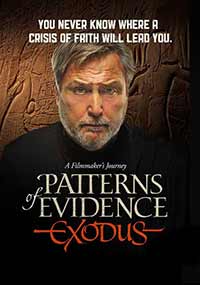Stats for Spotify: The SaaS Game Changer
 By
By
In today's evolving era, software as a Service
(SaaS) has transformed how we interact with software. The era of installations
and high initial expenses is in the past. SaaS, which involves software stored
in the cloud and accessed through the internet, provides a user with an
-economical option. It operates on a subscription basis, in contrast to
software buying practices, and its influence can be seen across different
sectors. ●
Ease
of Access: SaaS applications can be accessed through web
browsers, allowing users to use them from any location with an internet
connection. This feature is particularly important in today's world.
●
Cost
Efficiency: SaaS solutions eliminate the need for
investments in software licenses. Users pay a subscription fee that often
includes updates, maintenance, and customer support. This payment structure
appeals to businesses looking to reduce expenses.
●
Scalability:
Scaling up or down with SaaS is simple. Businesses can easily adjust the number
of users and features according to their evolving needs without overhauling
their existing infrastructure.
●
Automated
Updates: SaaS providers handle software updates and
patches, ensuring that users always have access to the features and security
enhancements.
●
Personalization
and Compatibility: SaaS products offer customizable options and
seamless integration with other tools and services catering to various business
requirements.
SaaS solutions have found a home in numerous
sectors, demonstrating their versatility and adaptability: ●
Business
Management: CRM, ERP, HR, and project management tools like
Salesforce, SAP, and Asana are essential in this category.
●
Communication
and Collaboration: Zoom, Slack, and Microsoft Office 365 exemplify
the tools for video conferencing and team collaboration.
●
E-Commerce
and Marketing: Shopify and HubSpot are leaders in online store
management and digital marketing.
●
Financial
Services: QuickBooks and Xero offer solutions in
accounting and financial planning.
●
Education:
Blackboard and Canvas lead in e-learning platforms and educational content
delivery.
●
Healthcare:
Telemedicine services and patient management systems like Epic Systems and
Cerner are crucial.
●
Creative
Industries: Adobe Creative Cloud and Canva represent tools
for graphic design and content creation.
This broad adoption showcases SaaS's
cost-effectiveness and continuous evolution, making it suitable for everyone, from
startups to large enterprises. Interestingly, SaaS products are also becoming
increasingly popular in the music industry, particularly in music analytics
services. A prime example of this trend is Viberate. This music analytics
platform redefines how we understand and interact with music data. Viberate's approach is comprehensive: it maps
and analyzes the entire music industry ecosystem, including artists, tracks,
festivals, playlists, and labels. It converts streaming and social data into
actionable information, aiding talent discovery, promotional campaign planning,
and efficient business reporting. Monitoring over a million artists and various
channels like Spotify, YouTube, Apple Music, Shazam, SoundCloud, TikTok,
Instagram, Twitter, and Facebook, Viberate offers a unique, in-depth view of
the music landscape. Among its many features, Viberate's Spotify statistics stand
out. Understanding Spotify stats is
crucial for artists, and Viberate offers an extensive analysis, including
tracking monthly listeners, followers, and streams. This data is available both
historically and in real-time, offering insights into top songs and overall
performance on Spotify. Additionally, Viberate tracks playlist features allow
artists to monitor playlist changes, reach over time, and identify impactful
songs and playlists. Viberate's playlist analyzer is another
remarkable feature. Covering over 12 million Spotify playlists, this tool ranks
them by popularity and allows sorting by follower count, recent growth, and
track numbers. This functionality is invaluable for artists who match their
genre with suitable playlists and plan effective music release promotions. The
ability to filter by playlist type, including user-generated and editorial,
adds another layer of precision to this strategic tool. The rise of SaaS in various industries and its
recent foray into music analytics signify a fundamental shift in how businesses
and creatives approach their work. Platforms like Viberate are at the
forefront, leveraging the power of SaaS to offer comprehensive, insightful, and
actionable Spotify stats, stats for Spotify, and other music-related data. As
these tools evolve, they promise to unlock new possibilities and efficiencies,
ensuring industries like music stay vibrant and dynamic in an ever-changing
digital landscape.Key Features of SaaS Products
SaaS Across Industries
The Intersection of SaaS and the Music Industry
How Viberate is Changing the Game
Spotlight on Spotify Stats
Mastering Playlists with Viberate
Conclusion






